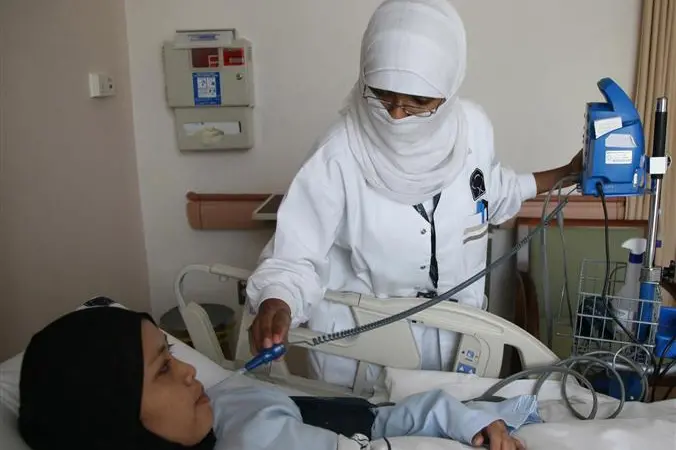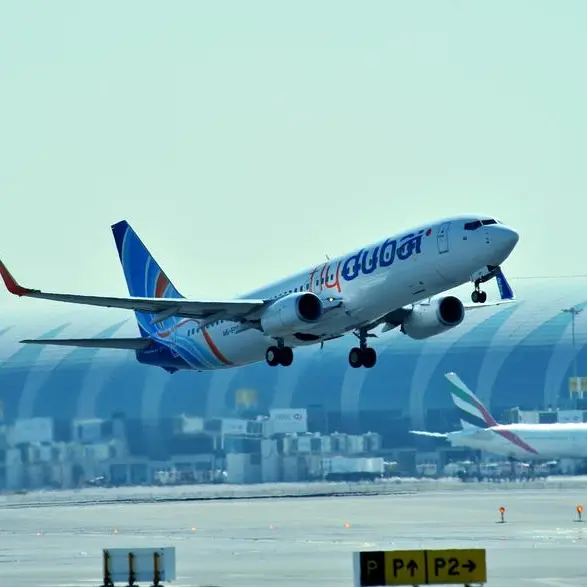PHOTO
Gulf states continue to channel sizable funds into their healthcare sectors, despite an austerity drive triggered by low crude oil prices over the past two years.
Governments across the Gulf Cooperation Council (GCC), especially Saudi Arabia and the United Arab Emirates (UAE), have allocated billions of dollars to the sector and introduced new reforms aimed at keeping it in a healthy condition.
According to Alpen Capital, the region’s healthcare market is set to reach $71.3 billion in 2020, from $40.3 billion in 2015, growing at an impressive compounded annual growth rate of 12.1 percent.
More long term, management consultancy Ernst & Young expects Saudi Arabia’s spending on healthcare alone will reach $61.2 billion by 2024, more than double that spent in 2014. The UAE’s healthcare spending is also expected to jump to $25.7 billion by 2024, compared to $13.6 billion in 2014. Collectively, GCC healthcare spending is forecast to reach around $114 billion in the time period, up from $55 billion in 2014.
Saudi Arabia has led the region in terms of direct investment, with annual allocations to the health and social services in the budget hitting 120 billion Saudi riyals ($31.9 billion) this year, up from SAR101 billion in 2016.
In 2015, the kingdom allocated a massive 160 billion Saudi riyals, as the country unveiled ambitious plans to expand it hospitals and clinics network, upgrade medical facilities and pour billions into developing local talent with the development of medical universities and research labs.
The government said that work was under way to construct and develop 38 new hospitals with a total capacity of 9,100 beds, apart from two medical cities accommodating 2,350 beds. During the current fiscal year, 23 new hospitals (4,250 beds) in various regions across the kingdom were built.
The UAE’s budget for 2017 also earmarked 4.17 billion dirhams ($1.13 billion), or 8.6 percent of the total, on healthcare services.
Separately, Dubai also announced a 2017 budget worth 48.7 billion dirhams, with 8.6 percent - or nearly 4.2 billion dirhams focused on healthcare. The emirate did not break down the figure in 2016, but did note that health, education, housing and community development would secure 16.9 billion dirhams – or 37 percent of the total budget.
Needs must
Gulf states have stepped up their efforts in recent years to expand their healthcare services sector, especially on the back of rising populations, growing economies and changing lifestyles.
Prevalence of diabetes and obesity in the Gulf is among the highest in the world, while other ailments such as hypertension and cardiovascular conditions are also rampant, as modern technology, affluence and hot climate conditions limit physical activity.
While Gulf governments have traditionally funded healthcare services, the private sector has begun to make a more sizable contribution to offering healthcare services, driven by insurance reforms in some GCC countries over the past 5–10 years.
“The GCC governments are also supporting private sector investment in an attempt to diversify their economies, helping the private sector to take a greater share of the growing demand for health services provision in the region,” according to an Ernst & Young report.
“At present, the health expenditure is mostly funded by the government, with the public sector covering around 65–80 percent of total health expenditure across GCC countries in contrast to most developed nations and other emerging markets,” E&Y said.
In addition, healthcare systems in the region continue to lag behind international standards, E&Y report notes.
“Most GCC countries, in comparison with developed countries trail behind on health infrastructure indicators such as number of beds, physicians and medical staff/1,000 population.”
The UAE has on average 1.1 bed per 1,000 people, and Saudi Arabia has 2.1, compared to 2.9 in the United States and 8.2 in Germany, E&Y data shows.
The UAE has 1.9 physicians for 1,000 people, Saudi Arabia has 2.5 physicians for 1,000 people, compared to 2.8 in the UK. The region was behind in the recruitment of nurses, with only four nurses per 1,000 people in the UAE, and 2.3 for Saudi Arabia, compared to 6.3 for Singapore and 9.8 for the United States.
Healthcare spending as a percentage of gross domestic product (GDP) continues to hover around 3.3 percent in the UAE, and 3.7 percent in Saudi Arabia, compared to 17.3 percent in the U.S. and 8.4 percent in the UK, which suggests there is a long way still to go for the region to raise investment spending.
Private equity growth
The Gulf region’s healthcare sector presents unique opportunities for investors as the dearth of services, coupled with rising affluence, is a great prescription for growth.
Investors have also been actively on the hunt. Mergers and acquisitions between 2006 and 2016 saw the completion of 62 deals valued at $3.2 billion, according to Al Masah Capital. The year 2011 was a banner year for healthcare with deals worth $1.1 billion completed.
Al Masah research shows the UAE was the prime destination for healthcare deals during the period, accounting for 28 deals (45.2 percent of the total), followed by Saudi Arabia with 18 deals (29 percent), Kuwait with 13 deals (21 percent), and Oman with 3 deals (4.8 percent).
Private equity was active, and involved in 57 transactions valued at $697.2 million during 2006-16, with the majority of the investment focused on the UAE, Saudi Arabia and Kuwait.
However, the pace of mergers has eased as the region due to a protracted oil downturn, which is only slowly showing signs of lifting.
However, the number of private equity exits in the region has been rather limited, with six exits, primarily due to the nascent and evolving nature of the private equity industry.
There have also been a handful of initial public offerings in the region, with UAE-based NMC Healthcare and Al Noor Hospitals listing on the London Stock Exchange.
Since then, South Africa-based Mediclinic International’s acquired Al Noor Hospitals Group for $2.2 billion in a reverse takeover deal, said to be the largest deal in the GCC healthcare sector.
Since 2001, the Gulf has seen eight IPOs by healthcare companies, as they took advantage of the burgeoning interest in the sector. Saudi-based Middle East Healthcare Co, last year raised 12 billion Saudi riyals through an IPO and was oversubscribed 2.7 times, signalling strong interest, despite a subdued economic environment.
The Gulf region’s healthcare sector has enjoyed robust growth over the past decade, before the oil downturn compelled the governments and the private sector to pause their investment plans. But given the favourable demographics and expanding economies, the sector continues to see healthy growth going forward.
© An exclusive report by Frontiernations.com for Zawya.com
© Zawya 2017












